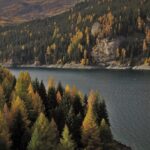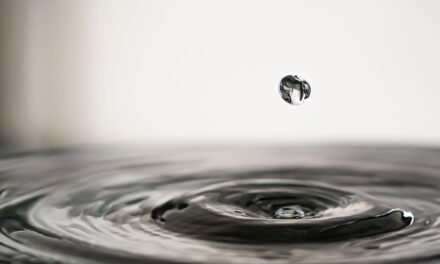Water cycle management in urban areas, Causes of Water Shortages, Greater Salt Lake, etc.
Water cycle management in urban areas for Greater Salt Lake
The Great Salt Lake: A Vital Oasis in Peril
Imagine a vast, shimmering sea, nestled in the heart of the American West. This is the Great Salt Lake, a unique ecosystem teeming with life and a vital resource for Utah and beyond. But this sea is in danger.
The Great Salt Lake is shrinking. A combination of drought, overuse of water resources, and the accelerating effects of climate change are draining this vital body of water. Once fed by the snowmelt from majestic mountain ranges, the lake is struggling to survive.
But there’s hope. The Active Climate Rescue Initiative is leading the charge to save the Great Salt Lake. This dedicated group is working tirelessly to find sustainable solutions to increase water supply in the Great Basin, ensuring the survival of this precious ecosystem.
Join the fight! Learn more about the Great Salt Lake, the threats it faces, and how you can support efforts to restore its health. Together, we can ensure this vibrant oasis remains a source of life for generations to come.
The Great Salt Lake: A Sea in Danger
TL;DR: The Great Salt Lake is shrinking because of drought, overuse of water, and climate change. This is bad for people, animals, and the environment. We need to save water, use it wisely, and work together to protect this important lake.
The Water Cycle of the Great Salt Lake
The Great Salt Lake is a big, salty lake in Utah. It’s part of a fascinating water cycle that starts in the mountains. Snow falls on the mountains, and as the weather warms up, the snow melts and flows down rivers and streams into the lake. Some of the water evaporates into the air, leaving salt behind, which is why the lake is so salty. This process repeats over and over, creating a balance for the ecosystem.
The Challenges of Water Shortages
But lately, the Great Salt Lake has been shrinking. The water cycle is out of balance. Here are some key reasons why:
- Drought: Over the past few years, the Great Salt Lake area has experienced less snow and rainfall. This means less water flows into the lake.
- Overuse: People in the area use a lot of water for farming, cities, and industries. This leaves less water to reach the lake.
- Climate Change: Warmer temperatures cause more water to evaporate from the lake and the surrounding areas, making the drought problem worse.
The Impacts of a Shrinking Lake
When the Great Salt Lake shrinks, it creates problems for everyone. Here are some examples:
- Wildlife: Many birds, fish, and other animals depend on the lake for food and shelter. As the lake shrinks, they lose their homes and sources of food.
- Air Quality: When the lake shrinks, the dry lakebed can become dusty. This dust can cause respiratory problems for people and worsen air quality.
- Economy: The Great Salt Lake is important for tourism, recreation, and even the local economy. As the lake shrinks, these industries are affected.
Finding Solutions to Water Scarcity
We need to work together to protect the Great Salt Lake. Here are some ideas for finding solutions:
- Conserving Water: We can all help by using less water at home, in our gardens, and at work. This means taking shorter showers, fixing leaky faucets, and watering our lawns less often.
- Innovative Irrigation: Farmers can use new ways to water their crops that use less water, like drip irrigation.
- Policy Measures: Governments can create laws and programs to encourage water conservation and protect the Great Salt Lake.
The Active Climate Rescue Initiative
The Active Climate Rescue Initiative is a great example of a group working hard to save the Great Salt Lake. They are dedicated to finding ways to increase the water supply in the Great Basin, which includes the Great Salt Lake. They are using their expertise to help solve the water shortage crisis.
Summary
The Great Salt Lake is facing a serious water crisis. Climate change, drought, and overuse of water have all contributed to the shrinking of this vital ecosystem. This is causing problems for wildlife, air quality, and the economy. It’s important for everyone to understand the challenges facing the Great Salt Lake and work together to find solutions. By conserving water, adopting innovative irrigation techniques, and supporting initiatives like the Active Climate Rescue Initiative, we can protect this precious resource for future generations.
More on Water cycle management in urban areas…
- ## SEO Keywords: Water Cycle Management in Urban Areas
- General:
- Urban water cycle management
- Water management in cities
- Sustainable water management in urban areas
- Water cycle sustainability in urban environments
- Integrated water management in urban settings
- Urban water infrastructure
- Water conservation in urban areas
- Water recycling in urban areas
- Water reuse in cities
- Water harvesting in urban areas
- Stormwater management in urban areas
- Greywater management in urban areas
- Specific Aspects:
- Urban water demand management
- Water leakage detection and repair in cities
- Green infrastructure for water management
- Urban green spaces and water management
- Rainwater harvesting systems for urban areas
- Water-sensitive urban design
- Water-efficient landscaping in urban areas
- Urban water pricing and policy
- Water governance in cities
- Urban water scarcity
- Water security in urban areas
- ## SEO Keywords: Causes of Water Shortages
- General:
- Causes of water scarcity
- Water shortage causes
- Factors contributing to water scarcity
- Water stress and its causes
- Causes of drought
- Water depletion
- Water crisis causes
- Water conservation importance
- Water scarcity solutions
- Specific:
- Climate change and water scarcity
- Population growth and water scarcity
- Overpopulation and water shortage
- Agricultural water use and water scarcity
- Industrial water use and water shortage
- Urbanization and water stress
- Groundwater depletion
- Pollution and water scarcity
- Water overuse and water shortage
- Inefficient irrigation practices
- Water mismanagement
- Water infrastructure failure
- Water policy failures
- Climate change impacts on water resources
- Drought monitoring and forecasting
- Water scarcity mapping
- By Region:
- Water shortage in [specific region/country]
- Water scarcity in [specific city]
- Water challenges in [specific region/country]
- By Sector:
- Water shortage in agriculture
- Water shortage in industry
- Water shortage in urban areas
- Water shortage in households
- By Stakeholder:
- Water scarcity solutions for businesses
- Water scarcity impact on farmers
- Water scarcity impact on residents
- Water scarcity impact on government
- Please note:** This is a comprehensive list but you may need to adjust it based on your specific target audience and website content.











